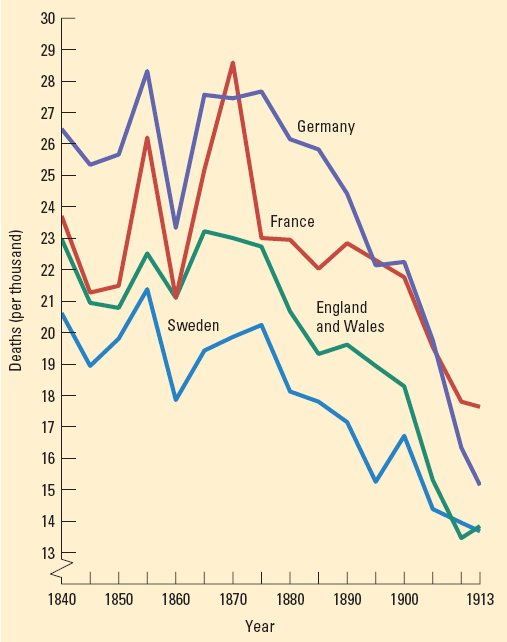The Advent of the Public Health Movement

 The Decline of Death Rates in England and Wales, Germany, France, and Sweden, 1840–
The Decline of Death Rates in England and Wales, Germany, France, and Sweden, 1840–Toward the middle of the nineteenth century, people’s fatalistic acceptance of their overcrowded, unsanitary surroundings began to give way to a growing interest in reform and improvement. Edwin Chadwick, one of the commissioners charged with the administration of relief to paupers under Britain’s revised Poor Law of 1834, emerged as a powerful voice for reform. Chadwick found inspiration in the ideas of radical philosopher Jeremy Bentham (1748–
Chadwick collected detailed reports from local Poor Law officials on the “sanitary conditions of the laboring population” and published his hard-
The public health movement won dedicated supporters in the United States, France, and Germany from the late 1840s on. Governments accepted at least limited responsibility for the health of all citizens, and by the 1860s and 1870s, European cities were making real progress toward adequate water supplies and sewerage systems. Though pollution remained a serious problem, city dwellers started to reap the reward of better health, and death rates began to decline (Figure 22.1).